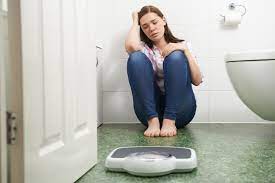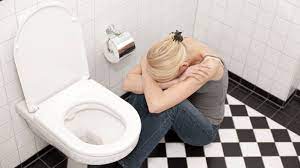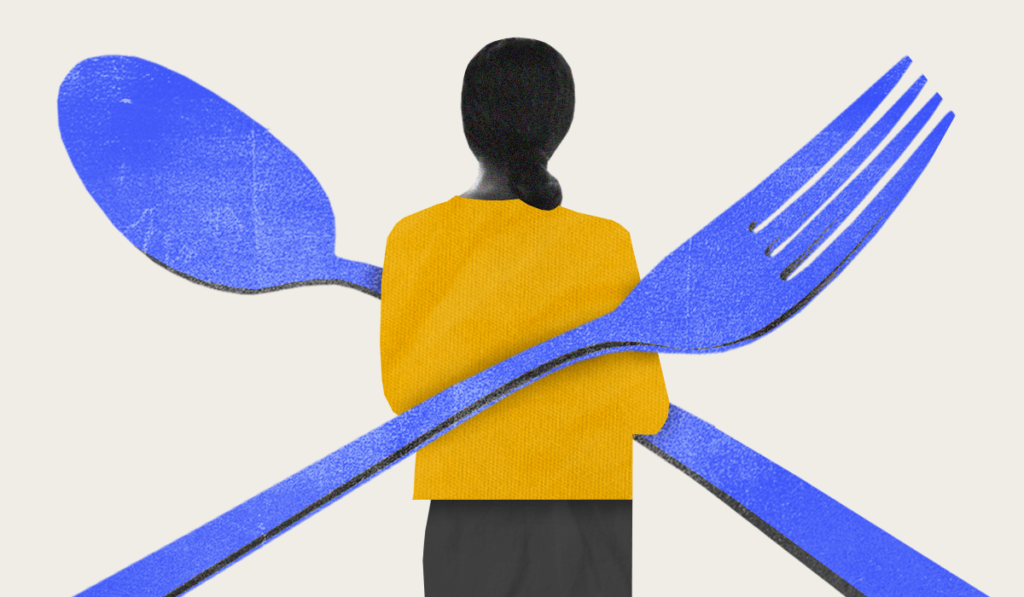If you have ever felt the urge to purge your food after eating, you may be wondering if you have a purging disorder. This is a condition that affects many people and can be very harmful to your health. In this blog post, we will discuss what purging disorder is, and how you can get help if you are struggling with it.
Contents
What Is Purging Disorder?

Purging disorder is an eating disorder characterized by the repeated urge to purge after eating. This can be done by vomiting, taking laxatives, or exercising excessively. People with purging disorder often have a distorted body image and may feel that they are fat even when they are not. They may also feel like they have no control over their eating habits. Although purging disorder has not been officially recognized as a diagnosable disorder, it is considered to be a serious condition that can lead to many health complications.
Who Is Likely To Develop Purging Disorder?
Purging disorder develops around the age of adolescence. It affects people of all ages but is most common in adolescent girls as well as young women. It is estimated that up to three percent of people struggle with purging disorder at some point in their lives. People exposed to eating disorders, such as anorexia nervosa or bulimia nervosa, are also at a higher risk for developing a purging disorder.
How Is It Different From Bulimia Nervosa?
Purging disorder has often been confused with bulimia nervosa because of the similarities in their symptoms. However, there are some key differences between the two disorders. Unlike in people with purging disorder, People with bulimia nervosa typically binge on large amounts of food and then purge in order to prevent weight gain. On the other hand, people with purging disorder do not necessarily binge before purging. In addition, people with bulimia nervosa typically have normal body weight, while people with purging disorder are often underweight.
Correlation To Other Illnesses
Purging disorder has been linked to other mental and physical illnesses like:
- Anxiety disorders
- Depression
- Substance abuse disorders
- Binge eating disorder
- Body dysmorphic disorder
- Borderline personality disorder
- Heart problems
People with purging disorder often have a history of trauma or abuse. They may also struggle with self-harm behaviors. People with purging disorder have a higher suicide rate along with self harming tendencies.
Methods of Purging
Some of the methods people with eating disorder use to purge are instances such as:
- Self-induced vomiting: people with eating disorders may make themselves vomit to get rid of food they have eaten. They often use their fingers to trigger the gag reflex.
- Misuse of laxatives and enemas: People with eating disorders may misuse laxatives for expelling food from their bodies before it has a chance to be absorbed into the bloodstream.
- Exercise: people with eating disorders may excessively exercise to burn off calories. This can lead to injuries, exhaustion, in addition to other health problems.
- Fasting: People with eating disorders may go for long periods of time without eating (fasting) in an attempt to lose weight.
- Misuse of diuretics: People with eating disorders may take diuretics (water pills) to help them expel water from their bodies.
Hence, Purging has serious effects on a persons physical health, if left unchecked for long it poses chronic threats to mental as well as physical health.
Symptoms

Some of the warning signs or symptoms of purging disorder as observed in patients are:
- Preoccupation with food, weight, as well as body image
- Unhealthy methods of weight loss, such as fasting, excessive exercise, or purging
- Skipping meals or restricting food intake
- Only eating in front of family
- Eating in secret or hiding food from others
- Feeling out of control around food
- Engaging in self-harm behaviors
- Feeling depressed, anxious, and also empty
- Isolating from friends and family
- Missing school or work due to illness
If you have observed someone with these symptoms or if you have presented these symptoms yourself, talking to a doctor might be a good choice for your mental and physical health.
Causes

Some known risk-factors or causes of purging disorder are:
- A history of dieting or yo-yo dieting: This can lead to a preoccupation with food as well as body weight.
- A history of eating disorders: If someone has had an eating disorder in the past, they are more likely to develop another one.
- A family history of eating disorders: Eating disorders tend to run in families. This may be due to genetic factors or environmental factors such as the way that food is viewed in the family.
- Perfectionism: People who are perfectionists tend to be very hard on themselves. Hence, They may see purging as a way to fix their mistakes.
- Low self-esteem: People with low self-esteem may turn to purging as a way to cope with their negative feelings. They use purging as a form of self harm.
- Traumatic events: Traumatic events such as sexual abuse or the death of a loved one can trigger purging disorder.
- Body dissatisfaction: People who are unhappy with their bodies may be more likely to purge. They purge to lose weight and make their bodies “more desirable”.
Although more research is required to find out the origin of this disorder, researchers have found a link between the above-mentioned factors and purging disorder.
Effects
Some of the major detrimental effects of purging disorder on our health are:
- Malnutrition: People with purging disorder often restrict their food intake, which can lead to malnutrition. This can cause problems with growth and development and can weaken the immune system.
- Dehydration: Vomiting and using laxatives can cause dehydration, which can lead to electrolyte imbalances. This can cause problems with heart function and can be deadly.
- Damage to the gastrointestinal tract: Repeated vomiting can cause damage to the esophagus, teeth, and stomach. This can lead to bleeding, ulcers, and perforations in the GI tract.
- Electrolyte imbalances: Laxative abuse can cause electrolyte imbalances, which can lead to problems with heart function.
- Heart arrhythmias: Purging can cause electrolyte imbalances, which can lead to heart arrhythmias. This can be deadly.
As you can see, purging disorder is a health hazard, if not treated properly. It can deteriorate your health more than you realize.
Treatment

Self-help in addition to professional help can go a long way to make purging disorder manageable.
Self Help Tips
Some of the ways you can help yourself manage your condition are:
- Eating a balanced diet: Eating a healthy diet can help you feel better physically and emotionally.
- Avoiding triggers: Identify what causes you to purge and avoid those triggers if possible.
- Exercising: Exercise can help you release pent-up energy and improve your mood.
- Finding a support group: Talking to others who are dealing with purging disorder can help you feel less alone and more understood.
Therefore, Changes to lifestyle can go a long way in eliminating distress from life.
Professional Help
Professional help for this type of eating disorder includes:
- Cognitive behavioral therapy: This type of therapy can help you change the thoughts and behaviors that contribute to this. CBT and medication are combined for better results.
- Dialectical behavior therapy: This type of therapy can help you manage your emotions and learn how to cope with stress healthily.
- Family-based therapy: This type of therapy can involve your family in your treatment and can help you improve your relationships. Therapists may also teach exercises to help families improve their bond with each other.
- Interpersonal therapy: This therapy is a short-term treatment that helps people improve communication skills and resolve conflict. It focuses on improving relationships with yourself and the people around you.
- Nutrition counseling: A registered dietitian can help you develop a healthy relationship with food and eating.
- Medication: There are no FDA-approved medications for this eating disorder, but some medications that are being used to treat related conditions such as anxiety and depression.
- Hospitalization: In some cases, people with purging disorder may need to be hospitalized for their own safety.
If you are going to seek professional help, some of the ways you can prepare are:
- Researching professionals: Ask for referrals from your doctor or insurance company, and look for reviews online.
- Making a list of questions: Prepare a list of questions to ask the professional, such as their experience with treating purging disorder and what treatment methods they use.
- Preparing for appointments: Make sure you have the time and resources available to attend appointments and plan for transportation if necessary.
- Find a therapist who specializes in eating disorders: This will help ensure that you are getting the best possible care.
- Prepare to talk about your symptoms: Be ready to discuss your symptoms and how they are affecting your life.
Hence, Doing these listed exercises before going in for professional help can help you find the best possible treatment from the professionals of your choice. Preparing before your session will always benefit you. professionals can help make purging disorder make more manageable for the client. It’s never too late to start making changes for yourself.
Conclusion
In conclusion, Purging disorder is a serious mental illness that can be difficult to manage on your own. If you are struggling to cope with your symptoms, seek professional help from a therapist or counselor. You can also make lifestyle changes to help reduce your distress, such as eating a balanced diet, exercising, and avoiding triggers. With the right treatment and support, you can live a healthy and happy life.
For more information and tips you can contact Therapy Mantra. We have a team of professional therapists who can provide you with the support and guidance you need to recover from this condition. Contact us today to learn more about our services. You can also book an online therapy session or download our free Android or iOS app.


